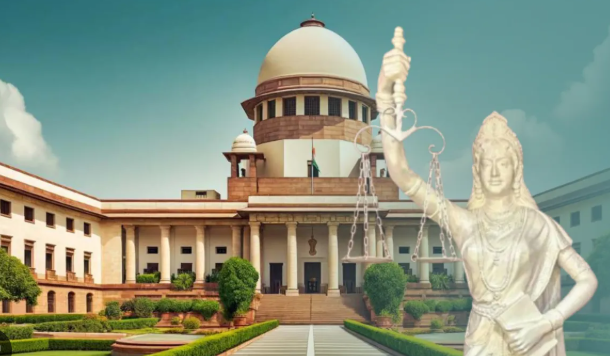
The Supreme Court’s 2025 judgment in M/S Dhanbad Fuels Private Limited v. Union of India & Anr. resolved critical ambiguities surrounding Section 12A of the Commercial Courts Act, 2015, which mandates pre-institution mediation for commercial disputes. The ruling clarified the mandatory nature of mediation, prospective application of precedent, and equitable remedies for legacy cases, marking a watershed moment in India’s alternative dispute resolution (ADR) framework.
Case Title: M/S Dhanbad Fuels Private Limited v. Union of India & Anr.
Court: Supreme Court of India
Citation: Civil Appeal No. 6846 of 2025
Bench: Hon’ble Mr. Justice J.B. Pardiwala
Date of Judgment: 15 May 2025
Background of the Case
Factual Matrix
-
Parties: Union of India (plaintiff) sued Dhanbad Fuels Pvt. Ltd. (defendant) in Commercial Court, Alipore (2019) for recovery of ₹8.73 crores in differential freight and penalties.
-
Key Issue: The suit bypassed pre-institution mediation under Section 12A, as it did not seek urgent interim relief.
-
Defense: Dhanbad Fuels filed an application under Order VII Rule 11(d) CPC to reject the plaint for non-compliance with Section 12A.
-
Lower Courts:
-
Commercial Court (2020): Refused plaint rejection, citing infrastructural deficiencies and referring the case to post-institution mediation.
-
Calcutta High Court (2021): Upheld the Commercial Court’s decision, keeping the suit in abeyance for seven months and directing mediation via the District Legal Services Authority (DLSA).
-
Legal Issues Before the Supreme Court
-
Whether non-compliance with Section 12A mandates plaint rejection under Order VII Rule 11(d) CPC.
-
Whether the prospective application of the Patil Automation judgment (2022) shields suits filed before August 20, 2022.
-
Whether infrastructural deficiencies at the time of filing constitute a valid defense against Section 12A compliance.
Supreme Court’s Analysis
1. Mandatory Nature of Section 12A
The Court reaffirmed that Section 12A is substantive, not procedural, emphasizing its role in reducing judicial backlog:
-
Legislative Intent: The provision aims to ensure only genuine disputes reach courts after exhausting mediation.
-
Prospective Application of Patil Automation:
-
The 2022 ruling, which declared Section 12A mandatory, applies prospectively from August 20, 2022.
-
Suits filed before this date are shielded from plaint rejection but must undergo mediation.
-
-
Urgent Interim Relief Exception: Courts must assess whether a plaintiff’s claim for urgent relief is genuine or a tactic to bypass mediation. Even if relief is denied, the suit proceeds if the claim was bona fide.
2. Equitable Relief for Pre-2022 Suits
Acknowledging infrastructural gaps in West Bengal (2019), the Court applied the maxim lex non cogit ad impossibilia (law does not demand the impossible):
-
Remedy: Instead of rejecting pre-2022 suits, courts may stay proceedings and direct mediation.
-
Mediation Timelines: Mediation must conclude within 3 months (extendable by 2 months with mutual consent).
3. Judicial Discretion and Balancing Interests
The Court emphasized:
-
Victim-Centric Approach: Prioritizing compensation over technicalities, as seen in Royal Sundaram v. Honnamma (2025).
-
Procedural Rigor vs. Equity: While Section 12A is mandatory, retroactive plaint rejection would cause injustice to legacy cases.
Key Implications of the Judgment
For Pre-August 2022 Suits
-
No Automatic Rejection: Courts may stay proceedings and direct mediation.
-
Mediation Outcomes: Settlements are binding under Section 30(4) of the Arbitration and Conciliation Act, 1996.
For Post-August 2022 Suits
-
Strict Compliance: Non-compliance warrants plaint rejection under Order VII Rule 11(d).
-
Urgent Relief Scrutiny: Courts must verify the bona fides of urgent interim relief claims.
Table: Compliance Framework for Section 12A
| Aspect | Pre-August 2022 Suits | Post-August 2022 Suits |
|---|---|---|
| Plaint Rejection | Not applicable | Mandatory if non-compliant |
| Mediation | Court may stay and direct | Mandatory pre-institution |
| Urgent Relief | Assess genuineness of claim | Same |
Critical Evaluation
Strengths
-
Clarity on Prospective Application: Prevents chaos by shielding pre-2022 suits.
-
Victim-Centric Approach: Aligns with the Supreme Court’s emphasis on substantive justice in Patil Automation.
-
Alignment with Global Practices: Reflects principles of the Singapore Convention on Mediation by institutionalizing ADR.
Challenges
-
Infrastructural Gaps: Persistent disparities in mediation infrastructure across states.
-
Judicial Burden: Courts must scrutinize urgent relief claims, adding to their workload.
Conclusion
The Dhanbad Fuels judgment strikes a delicate balance between enforcing mandatory mediation and addressing systemic challenges. By prospectively applying Patil Automation, the Supreme Court preserved the integrity of legacy cases while advancing India’s ADR framework. The ruling underscores the judiciary’s commitment to reducing litigation burdens and fostering a culture of mediation, in line with global trends. Legal practitioners must now navigate this dual regime, ensuring compliance for post-2022 suits while leveraging equitable remedies for older cases.